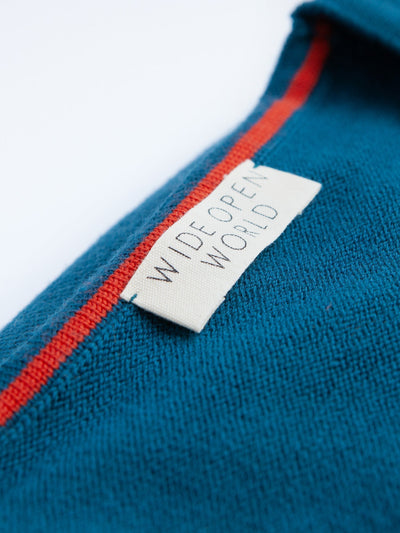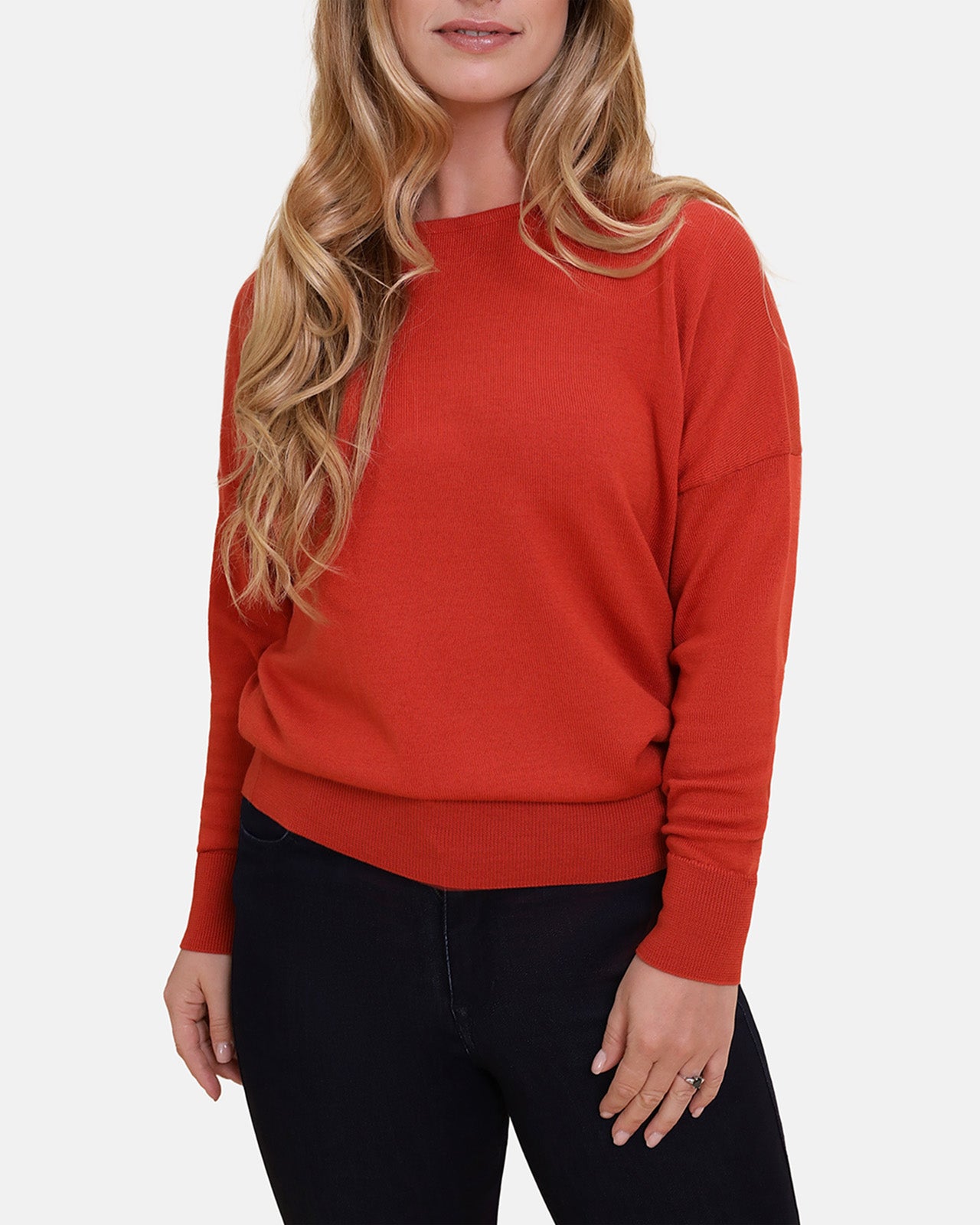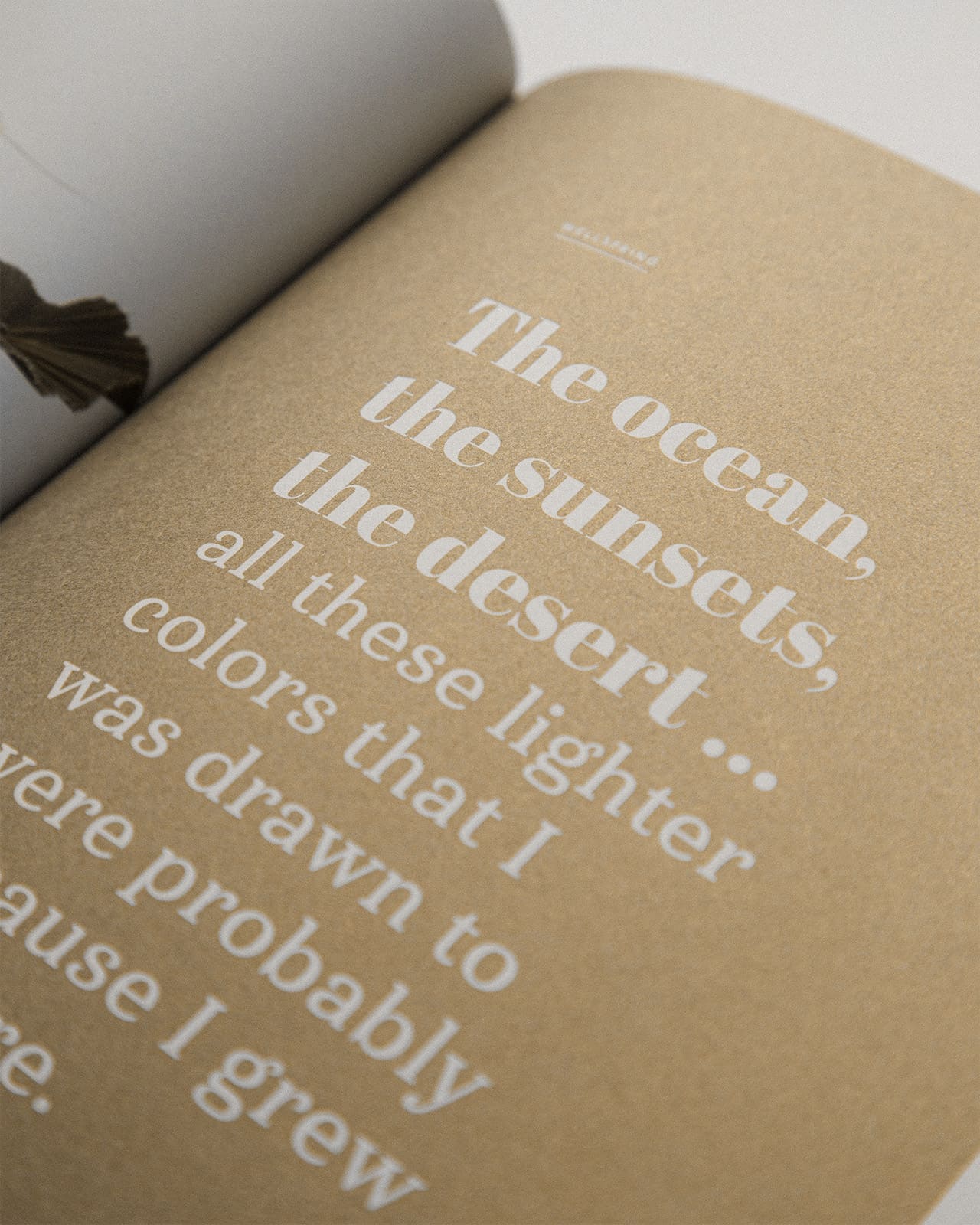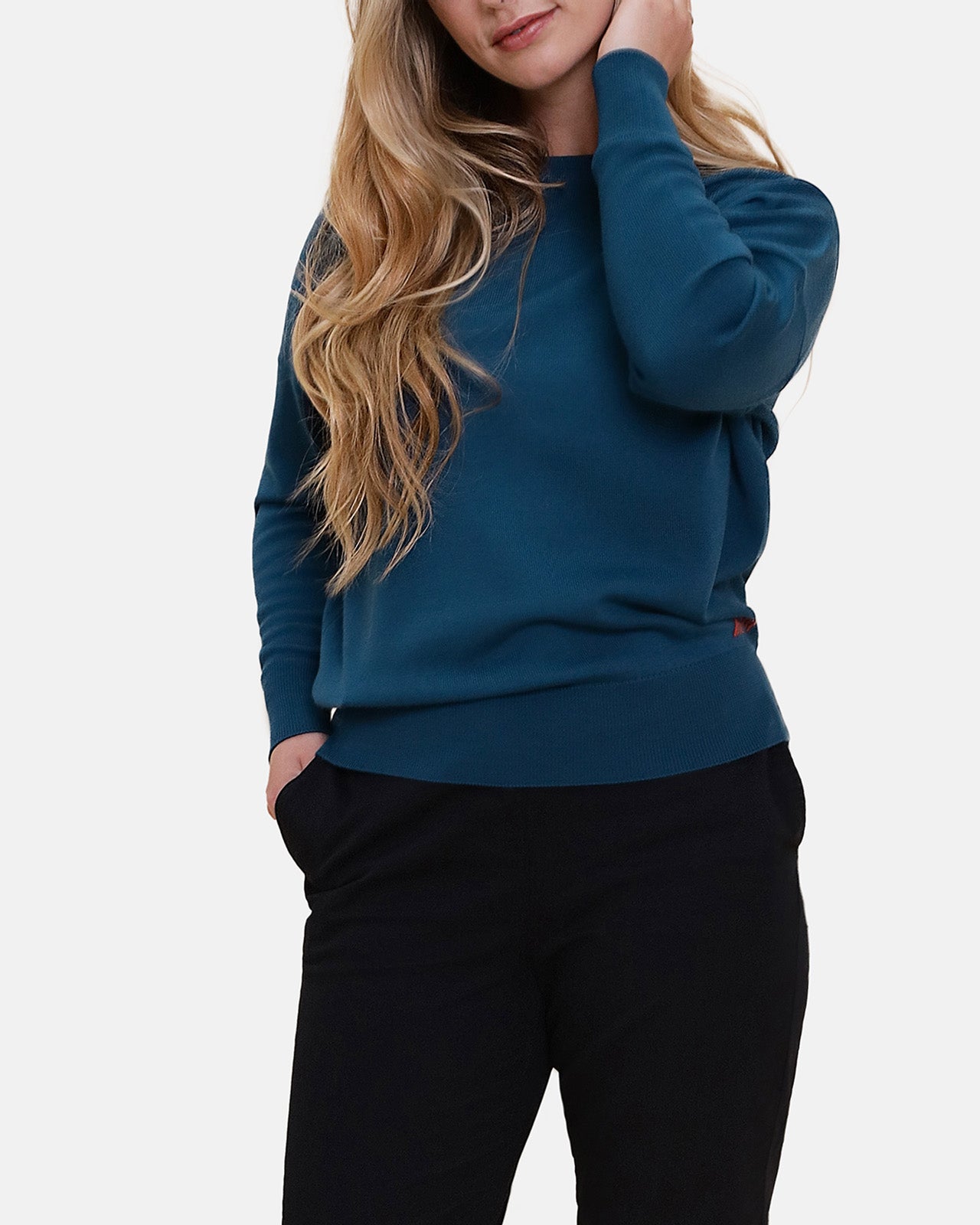While exceptional raw materials provide the foundation (as explored in Part 1 of this guide, where we examined material selection and fibre characteristics), truly distinguished knitwear depends equally on sophisticated construction techniques. Not all knitwear is created with equal attention to craftsmanship. The methods employed determine fit precision, wearing comfort, and long-term structural integrity.
The Ultimate Guide to High-Quality Knitwear. Part 2: Craftsmanship and Construction
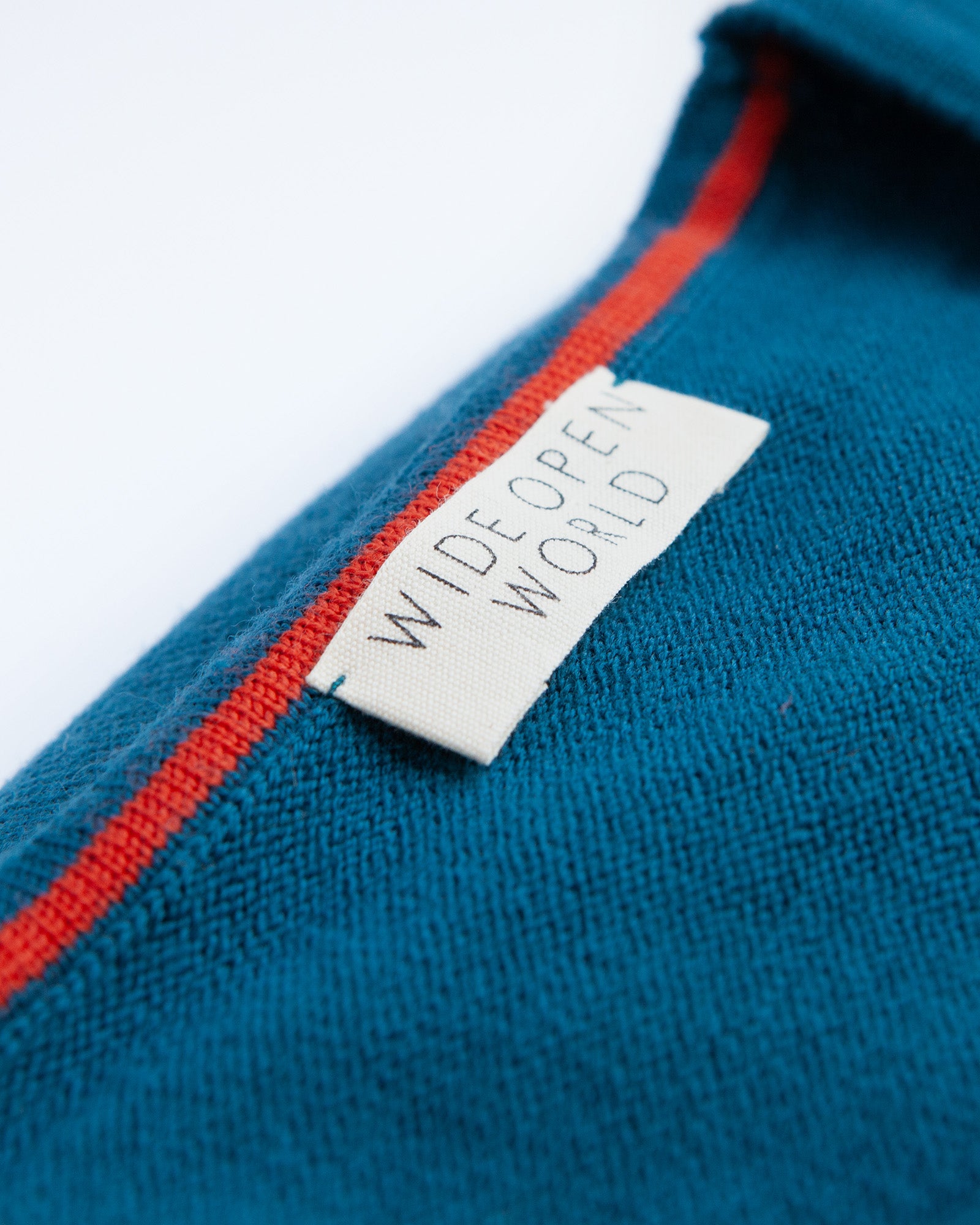
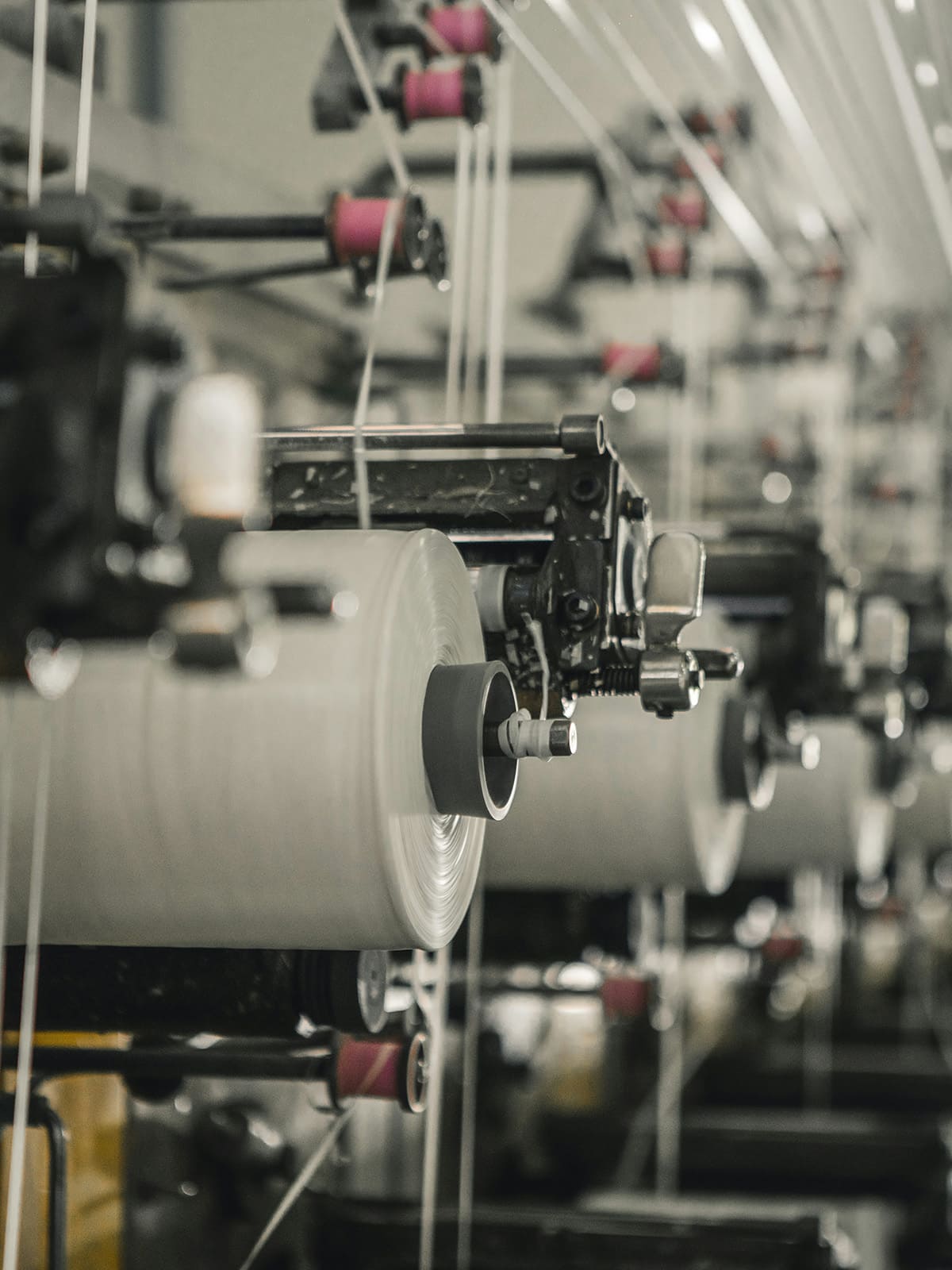
Understanding construction methods
1. Cut-and-Sew (Mass Production)
- Fabric is cut from large knitted rolls and subsequently stitched together
- Produces bulky, often uneven seams
- Creates inconsistent tension across the garment
- Results in imprecise fit due to cutting variations
- Generates substantial material waste
The vast majority of commercially available knitwear utilises the cut-and-sew method. This approach involves cutting pattern shapes from pre-knitted fabric rolls before stitching them together. While efficient and cost-effective, this method introduces significant compromises. Cutting stretched fabric creates inherent variation, and the resulting seams lack the refined appearance that characterises superior knitwear. Cut-and-sew seams can be identified by their unevenness and absence of precise curves. These seams present a raised profile similar to typical t-shirt construction rather than lying flat. Furthermore, the comfort provided by this method falls considerably short of what more sophisticated knitting techniques, such as fully-fashioned, deliver.
2. Fully Fashioned (Luxury, Artisanal Standard)
- Individual components are precisely knitted to shape, then meticulously hand-linked
- Ensures flat, elegant seams, superior anatomical fit, and enduring structural integrity
- Significantly reduces material waste
- Creates distinctive, refined edge finishes
Fully fashioned knitting involves individually crafting garment elements on specialized machines before linking them by hand. This meticulous process ensures exceptional comfort and a polished appearance. The resulting seams become distinctive design elements that elevate the garment's aesthetic. These seams present a flatter, more precisely executed appearance than cut-and-sew alternatives, delivering superior comfort. Moreover, fully fashioned knitting's precision reduces variation and inconsistency—particularly crucial for styles requiring exactitude. Because this method knits components to shape rather than cutting from fabric, it generates minimal waste, adding to its appeal for premium fibres. Hand-linking represents a specialised skill demanding exceptional attention to detail, which explains fully fashioned knitwear's position as the most refined and investment-worthy construction method.
3. Wholegarment/Seamless (Innovative Alternative to Cut-and-Sew)
- Knitted as a single continuous piece without seams
- Provides enhanced comfort but may sacrifice structural definition
- Best suited for casual, relaxed silhouettes rather than precisely tailored profiles
Wholegarment or seamless knitting produces knitwear entirely on specialised machines, conceptually similar to seamless hosiery production. While offering greater consistency than cut-and-sew approaches, this method presents inherent limitations regarding style possibilities and cannot achieve the precise, architectural elegance of fully fashioned construction. Additionally, seamless knitting lacks the structural integrity that well-executed seams provide, often resulting in an inherent twist in the fabric over time. This technique proves most appropriate for casual, relaxed silhouettes that don't demand the refined sophistication characteristic of fully fashioned garments.
For timeless elegance and structural integrity, fully fashioned knitwear remains the gold standard.
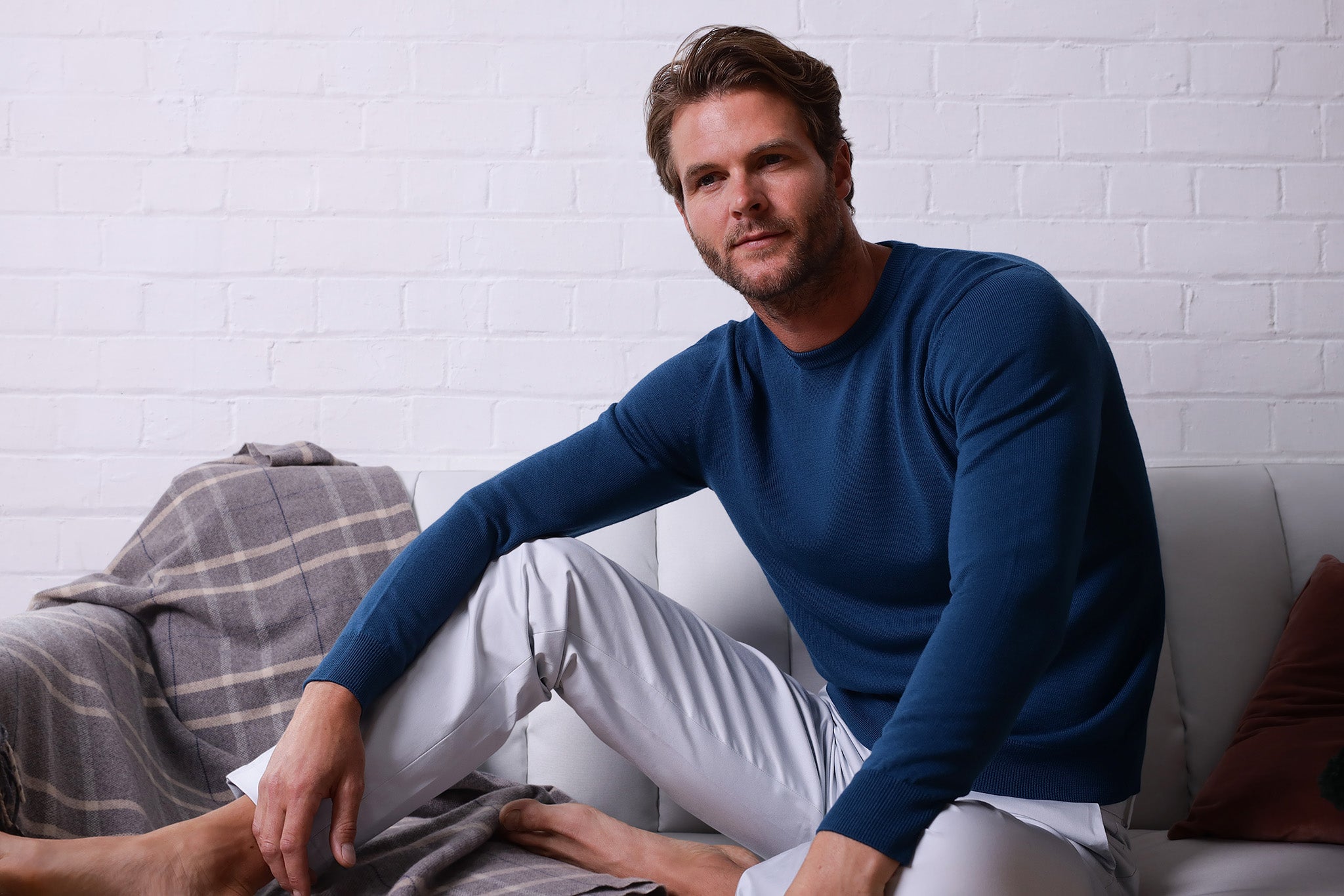 Wide Open World Vanguard Crew
Wide Open World Vanguard Crew
 Wide Open World Vanguard Crew fashioning marks
Wide Open World Vanguard Crew fashioning marks
The importance of tension and fit
What is Tension in Knitwear?
Tension refers to how tightly the yarn is knitted. Optimal balance ensures:
- Structured yet fluid drape and movement
- Resistance to excessive stretching or sagging
- Ergonomic comfort that complements rather than restricts natural movement
How Tension Affects Fit
- Excessively Loose: Fabric lacks definition and quickly loses structural integrity
- Excessively Tight: Garment restricts movement and creates discomfort
- Properly Balanced: Adapts to natural movement while maintaining intended form
Using tension, with intention
When individuals wear garments that create immediate comfort and confidence, they may not articulate precisely why, yet the sensation remains unmistakable. Like perfectly tailored suiting, knitwear requires precisely calibrated fit. Purposeful design and execution inform every aspect of superior knitwear.
For example, men typically appreciate slight tension around the forearms, while collar tension should provide adequate structure for shirt accommodation. Feeling secure around the torso without constriction proves essential for both comfort and confidence.
For women, preferences demonstrate greater variation; some favor unrestricted drape around the waist, while others prefer a more defined silhouette. In either case, merino wool's exceptional elasticity helps maintain the intended aesthetic without creating the restriction often associated with woven fabrics. Incorrect tension can result in shapeless garments that undermine confidence. Excessive tension prevents proper yarn movement and compromises comfort.
A well-crafted knitwear piece enhances both comfort and aesthetic appeal, from sleeve tension to overall proportions that complement individual style. Clothing significantly influences both physical comfort and self-presentation, making investment in properly executed garments invaluable.
Identifying Well-Tensioned Knitwear
- The fabric should feel substantial but not stiff
- Seams should sit flat without puckering
- When gently stretched, the fabric should recover its shape immediately
- Well-tensioned knitwear using quality materials should maintain its intended shape indefinitely. Cuffs should consistently return to original dimensions and tension, even after years of regular wear.
Tension is the invisible hallmark of expert craftsmanship. At Wide Open World, we calibrate tension precisely, ensuring each knitwear piece moves effortlessly with you.
 Wide Open World 2x2/48 superfine Tasmanian merino knit
Wide Open World 2x2/48 superfine Tasmanian merino knit
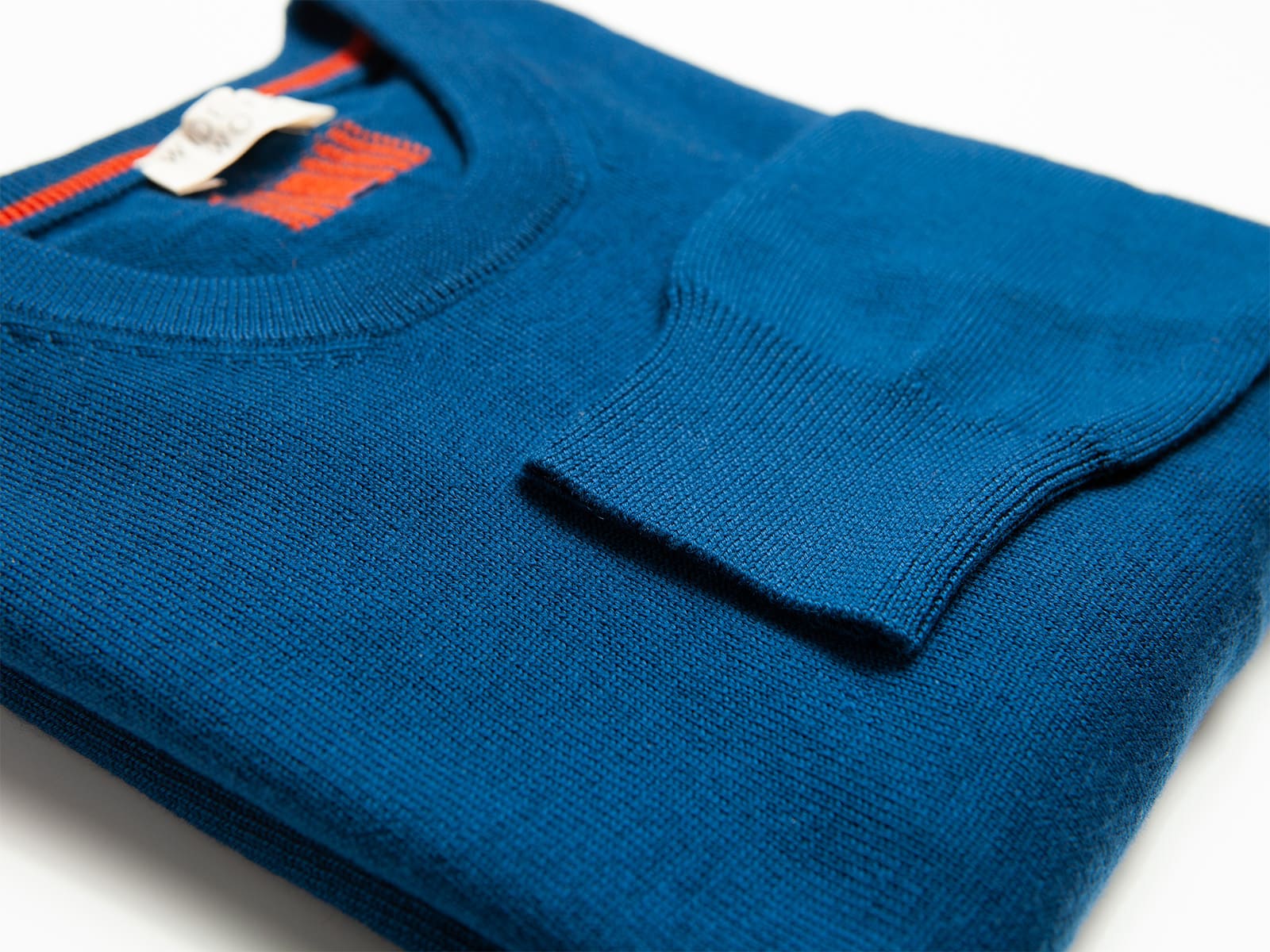 Wide Open World Vanguard Crew
Wide Open World Vanguard Crew
"Made to last": The foundations of knitwear longevity
Luxury should never be fleeting. A properly crafted knitwear piece should maintain its quality not merely through seasons but across decades. In today's market, advertising slogans such as "made to last" appear frequently without substantiation or precise definition, similar to the term "sustainable."
Discerning consumers rightfully demand demonstrable quality and durability. For those creating capsule wardrobes, durability represents a non-negotiable consideration. Who seeks to build a versatile wardrobe around knitwear that deteriorates prematurely?
The following sections share expert insights on crucial durability factors to guide your development of an enduring capsule wardrobe:
- Why certain knitwear loses shape while other pieces maintain structure for years
- How yarn selection and plying influence long-term performance
- Methods for evaluating potential longevity before purchasing
Raw fibres and yarn engineering
The foundation of high-quality knitwear lies in the quality of its raw materials. Certain fibres, particularly Merino wool, demonstrate inherent structural integrity. Factors including fibre length and yarn engineering contribute significantly to durability. Yarn ply count proves especially critical; single-ply constructions cannot deliver the resilience of two-ply alternatives. At Wide Open World, we begin with a two-ply yarn, which we ply again during the knitting process to further enhance its strength, resulting in a resilient and exquisite 2x2 yarn. Ply refers to the number of strands twisted together to create a yarn, with more plies equating to greater strength for a given fibre.
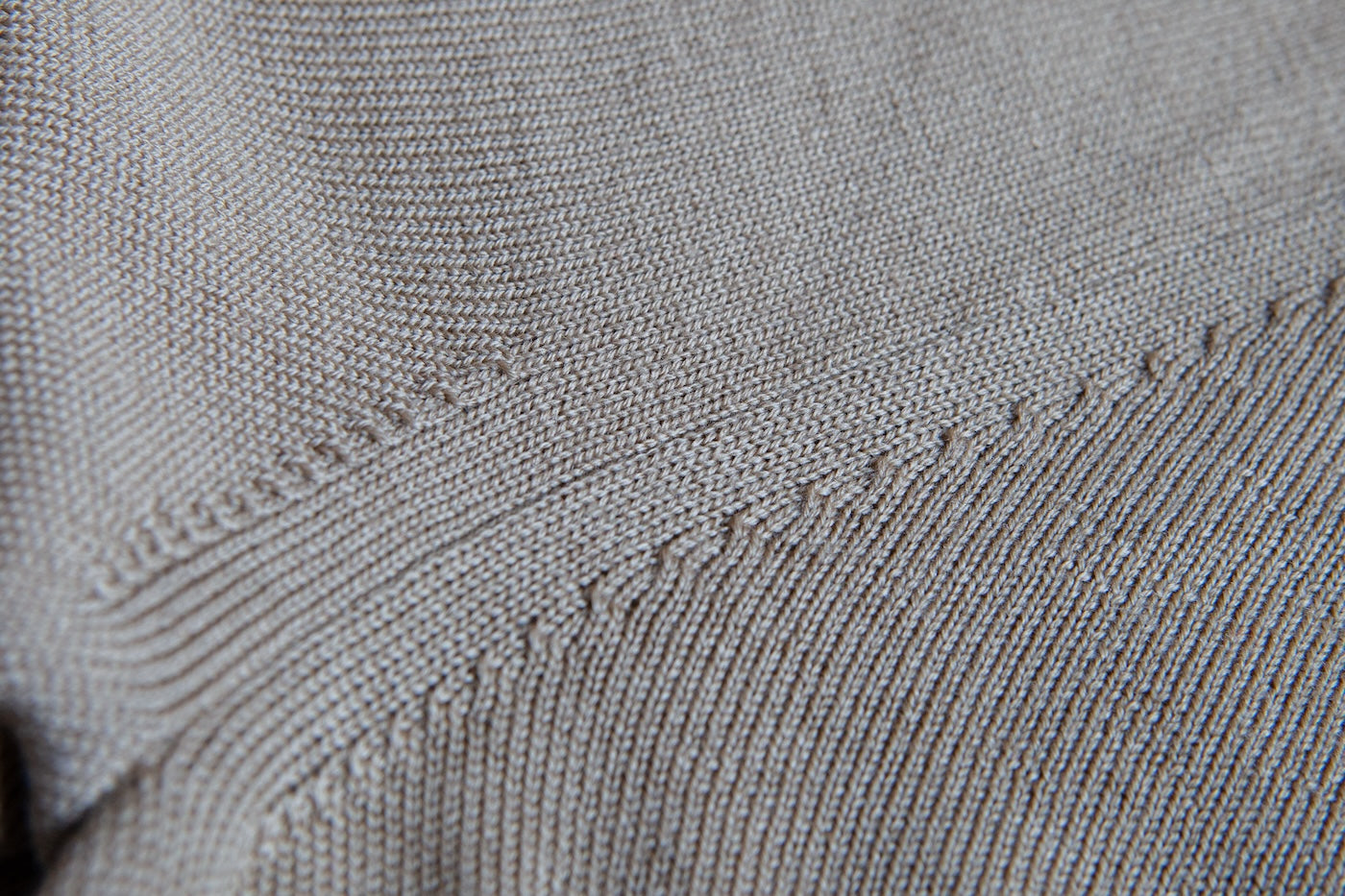 Exterior view of hand-linked shoulder seam in luxury knitwear
Exterior view of hand-linked shoulder seam in luxury knitwear
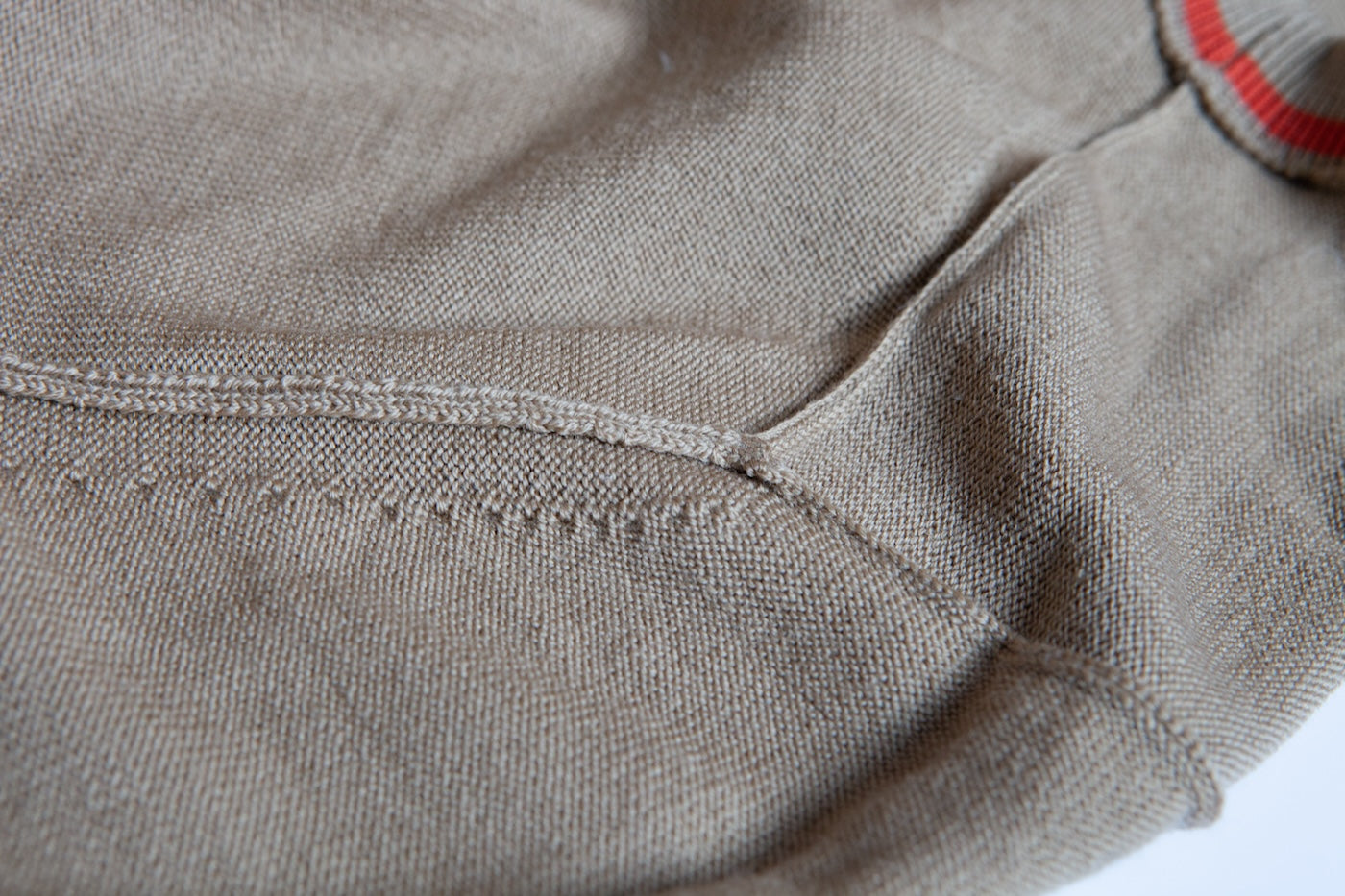 Interior view of hand-linked shoulder seam in luxury knitwear
Interior view of hand-linked shoulder seam in luxury knitwear
Craftsmanship beyond marketing
Not every company can genuinely deliver high-quality products. Quality isn't just a product attribute; it's a mindset, and an intention.
At Wide Open World, we source the finest natural fibres and elevate these these materials through meticulous craftsmanship. This demands an intimate understanding of each yarn, precise calibration of machinery to achieve optimal tension, in machinery calibration to achieve optimal tension, and continuous testing throughout development. This level of commitment differs fundamentally from mass-production approaches.
One unmistakable indicator of superior craftsmanship appears in seam execution. The finest knitwear producers eschew shortcuts while maintaining unwavering quality standards. Their seams transcend mere function to become aesthetic signatures of skilled artisanship. The photographic evidence shown illustrates this distinction eloquently. The first image shows a shoulder seam from the exterior, while the second reveals the same construction from the inside. The precision creates an unmistakable wearing experience—unrestricted, confidence-inspiring, and refined.

Versatility and timeless elegance
Lastly, we believe in enhancing wardrobes with timeless styles. While impulse buying for the latest trend may offer temporary satisfaction, beautiful and timeless designs endure the test of time. In today's fast-paced world, effortless and versatile styling brings a well-deserved feeling of calm and rest. At Wide Open World, we understand the importance of simplicity amidst chaos. Our meticulously crafted garments offer both comfort and sophistication, allowing you to go through each day feeling good. We take pride in curating top-of-the-line garments from our exclusive Tasmanian superfine merino wool, ensuring both quality and integrity in every stitch.
How to identify durable knitwear
- Look for well-structured seams and consistent knit tension.
- Avoid thin, loosely knit fabrics—they stretch and wear out prematurely.
- Choose natural fibres over synthetics, which degrade quickly.
- Assess edge finishes for precision and attention to detail, particularly at cuffs and necklines.
Final thought
Durability isn’t just about material—it encompasses thoughtful design, meticulous craftsmanship, and ethical production. At Wide Open World, we believe true luxury should last a lifetime, representing a wise investment rather than a temporary indulgence.
This guide continues in Part 3, where we explore sustainability and ethical production.

Recent articles
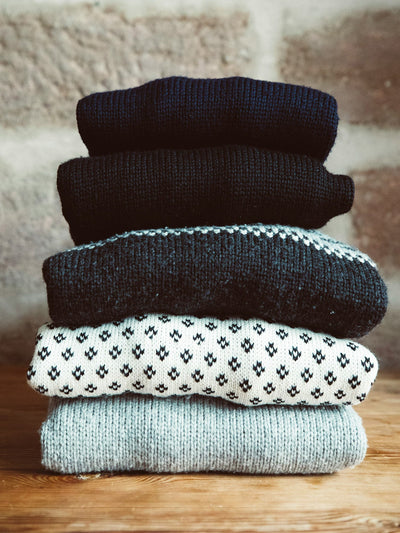
Piling Explained. Why It Happens & How to Prevent It.
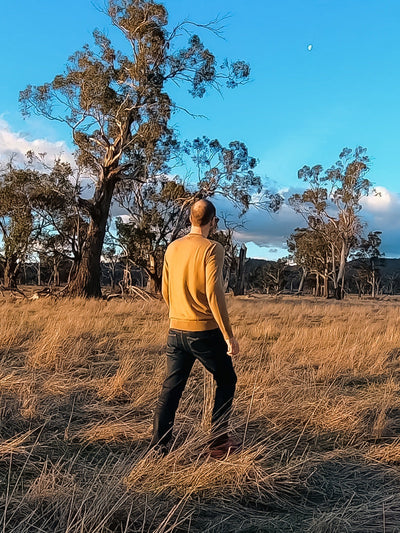
The Ultimate Guide to High-Quality Knitwear Part 3: Sustainability and Ethical Production
